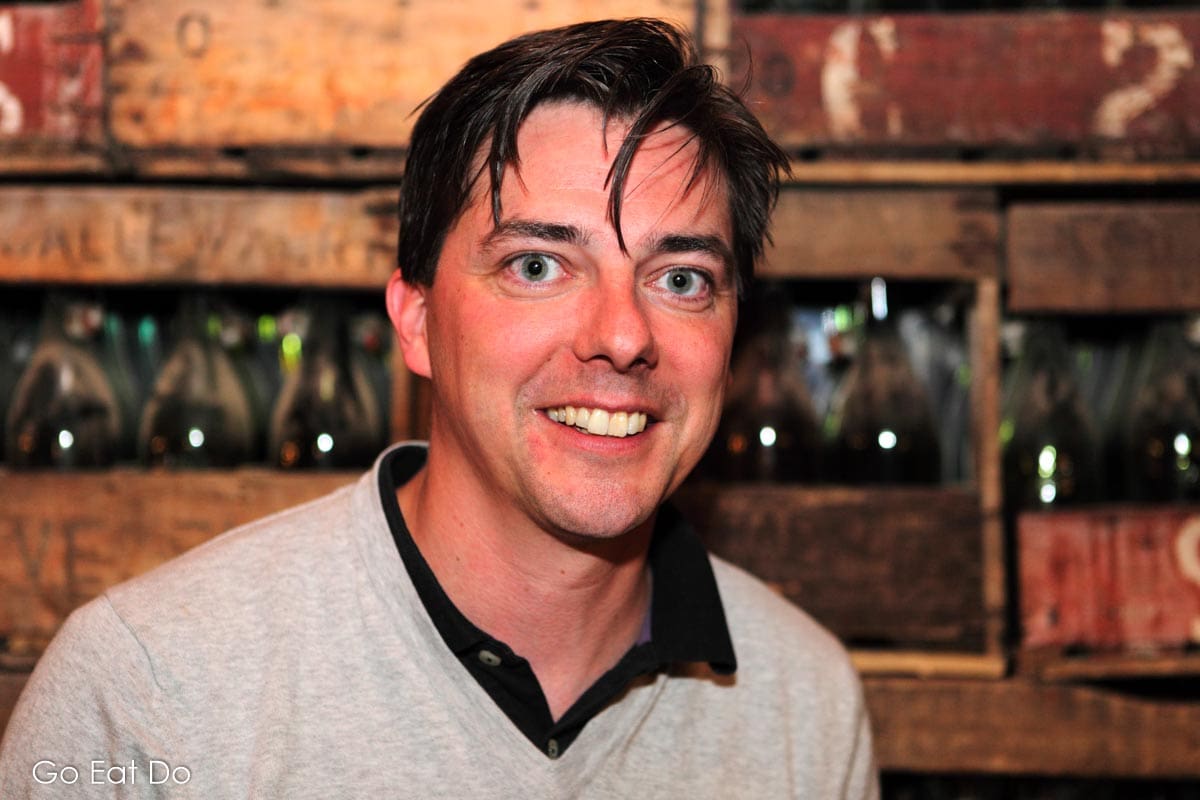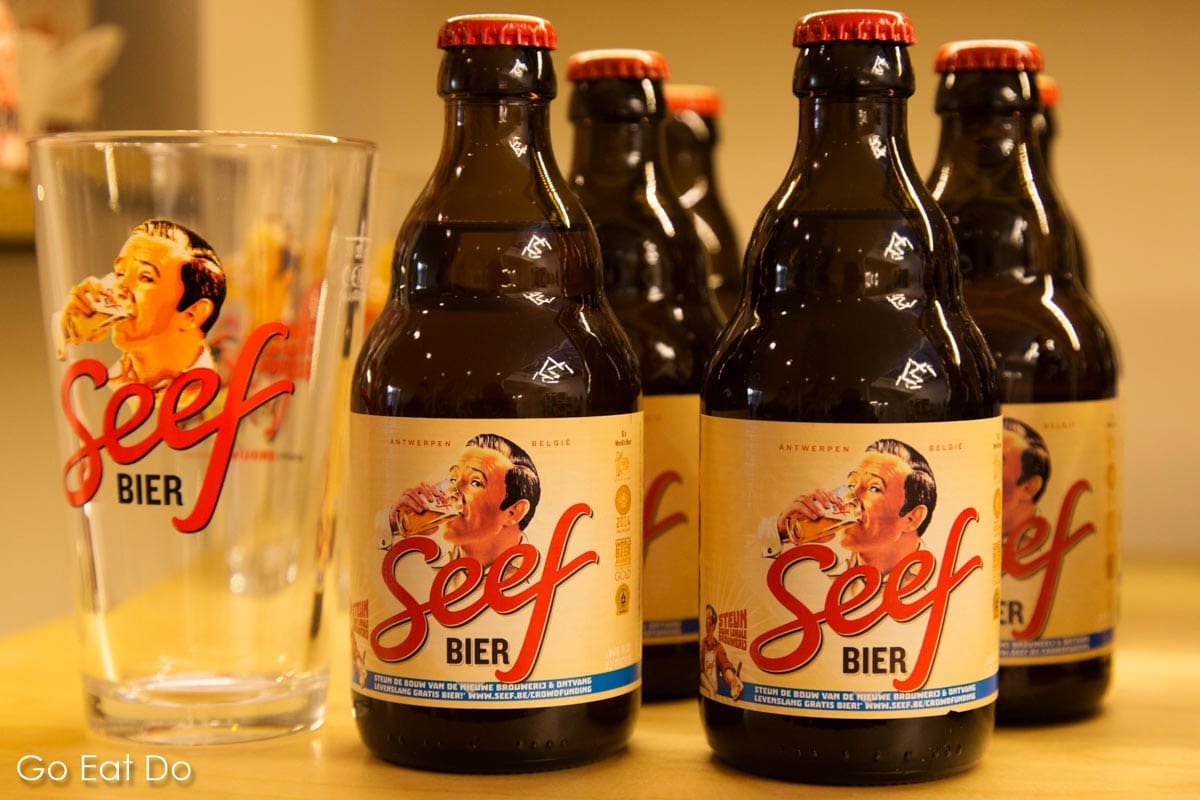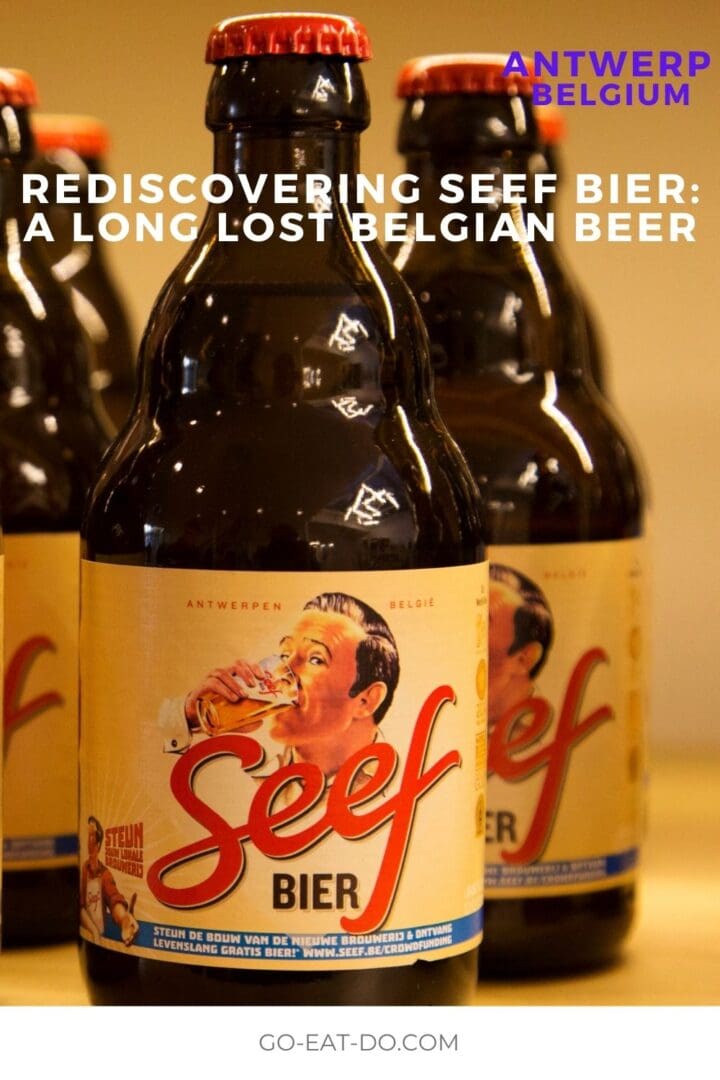Stuart Forster meets Belgian brewer Johan van Dyck who relaunched seefbier, a style of buckwheat beer popular in Antwerp before World War One, as Seef beer.
Disclosure: Some of the links below and banners are affiliate links, meaning, at no additional cost to you, I will earn a commission if you click through and make a purchase.
Seefbier, whose name is pronounced ‘safe beer’, was once a popular style of beer in and around the Belgian city of Antwerp. Prior to the outbreak of World War One it was known as ‘the Champagne of the poor people’. Following the war, the production of seefbier died out. For many years the recipe was lost.
Unusually, Seef featured buckwheat among its ingredients. Antwerp was the only place in Belgium where brewers were permitted to brew beers using buckwheat at the turn of the 20th century. Elsewhere its use had been banned, following the introduction of taxes on brewers’ ingredients in the 18th century. Antwerp’s brewers successfully appealed for an exception.

Antwerp’s long-lost beer
Johan van Dyck oversaw Seef’s revival. He relaunched the beer in March 2012 and went on to win a gold medal at the World Beer Awards.
I met with Johan at a bar in Antwerp. Over a beer, we chatted and I listened as he told the story of how he rediscovered the recipe and began brewing Seef beer.
“I went to a retirement home, to talk to old brewers, 80 or 90 years old, trying to track down the recipe. It took me over two years,” explained Johan.
Belgian beer in the early 20th century
“One of the lot of things that I found was a book written in 1916 by a Belgian author, a professor who wrote about all the beer styles that were present at the beginning of the 20th century. He described Seef beer but that was the only style where he didn’t mention the recipe, saying that, unfortunately, the Antwerp brewers kept it secret,” said Johan.
“He called it ‘retarded and stupid’; scientific works of 100 years ago were a little different to those of today. He said ‘unfortunately they keep it secret and therefore science cannot progress’ or words to that effect. That was not a good start but I kept on looking,” added the Belgian brewer.
Rediscovering Seefbier’s recipe
“I got some information quickly but the details made the beer unique. I got in contact with a family – their great grandfather used to own a brewery – they said ‘we have one or two things in our archive,’ which was a shoe box with some old pictures and things.
Their great-grandfather had worked in the brewery and the previous owner had given them all his knowledge in a handwritten booklet. They still had the manuscript. It was a lot of fun but not completely scientific.
If you now have a brewer’s book it’s really biochemistry, with the pH value of the water and the temperature plus everything you need. He wrote it down in 1887. He had all his recipes but also all the things that could go wrong and how to resolve them. A lot of things did go wrong then. He said ‘never let a woman into the brewery because that will change the beer,’ as one of the things to avoid your beer going sour. It was not scientific work but, finally, I had the recipe,” said Johan.

The disappearance of seefbier
“Three things happened in the 19th century. First of all, there was microbiology and Pasteur. He discovered what yeast does to beer and how to preserve it for longer.
Seefbier was brewed all around the city by small brewers. Their only competition was the brewer on the corner because by the time one three streets further away had delivered his beer it would go sour or spoil. Because of Pasteur, they could preserve beer longer and it could come from the other side of the city or even out of the country, so competition changed.
There was also industrialisation, so you could brew on an industrial scale using steam equipment,” explained the founder of the Antwerpse Brouw Compaigne.
Evolution of Belgian brewing
“Also, in the Czech Republic they discovered Pilsner beers, which also became popular in Belgium. In order to brew them here, you need cooling equipment; Pilsners need cooling when they are maturing. The small family-owned and craft brewers did not have the money to invest in that equipment,” said Johan.
“Just before the First World War there were three big industrial breweries being built in Antwerp…beer factories really, and the small brewers got into trouble. The Germans came and took away all the copper kettles and horses of the smaller breweries but left the modern equipment where it was because they made Pilsners and the Germans liked Pilsner beers. So, in two to three weeks, the small brewers lost all of their equipment. Some restarted but the same thing happened again in World War Two,” explained the man who relaunched Seef beer.
Flavour of Belgian beer
“After getting the recipe there were two challenges. I know how to brew with today’s equipment but some of the things described were from the 19th century and I didn’t know how to translate that into today’s equipment. The second was the yeast, which determines the flavour of beer,” said Johan.
“I went to the University of Leuven, where they have a faculty of beer chemistry and professors in brewing. They have a database of yeast that goes back to the beginning of the 20th century. Even today every brewer sends in their yeast, which is stored at two or three locations, so if something happens to the brewery you can get your yeast back. They helped me,” explained the brewer.
“I talked to my wife. I said, ‘Honey, I have an idea. What if I give up my job and risk all our money and start a brewery. I know the beer market is declining, there are many good beers and no one is waiting for yet another. The competition is strong and they control the distribution. So what do you think, should I start a brewery?’
She said ‘Yeah, that’s a great idea,’ so we went to the bank,” he said with a smile.
Launching Seef beer
“We launched the beer in Antwerp City Hall in March 2012. It took off so quickly that what I thought was the brewing for eight months sold out in two weeks,” said Johan.
“People said it was great but, for me, it was a nightmare. Our customers were upset because we couldn’t deliver and it takes eight weeks to brew this beer. For a period of six weeks we didn’t have our beer, which is an eternity if you’ve just launched something new,” added the brewer.
“After one week I sent out beer to the World Beer Cup, the Olympics of beer. Around 4,000 breweries take part and jury members vote. To be honest I didn’t do it because I thought we could win but I thought it was the cheapest way to get on the radar of importers. I didn’t fly to San Diego but got a lot of phone calls and messages in the middle of the night telling us we’d won,” says Johan.
Seef beer is now available in bars across Belgium and from craft beer stocking around the world.
Travel to Antwerp, Belgium
Antwerp is approximately 44 kilometres (27 miles) north of Brussels, Belgium’s capital city.
Driving between Brussels and Antwerp takes under an hour via the A12 or E19.
Railbookers offers holidays by rail to Belgium and other European countries.
Books about Belgian beer
Interested in brewing and Belgian beer? Take a look at the following books:
Craft Beer Brewing: The New Wave of Belgian Brewers by Jeroen Bert.
Belgian Trappist and Abbey Beers: Truly Divine by Jef van den Steen.
Brussels in Sips and Steps: Fourteen Self-Guided Walks to Explore Brussels’ History and Belgium’s Beers by W.S. Comstock.
CAMRA’s Good Beer Guide Belgium.
Further information
Seef beer is brewed using buckwheat, wheat, oats, barley and Belgian hops by the Antwerpse Brouw Compagnie. The beer is unfiltered, pale in colour and has 6.5 per cent alcohol by volume.
Learn more about the attractions of Antwerp in the Visit Antwerp and Visit Flanders websites.
Photos illustrating this post are by Why Eye Photography.
Thank you for visiting Go Eat Do and reading this post about Seef beer. If you enjoyed reading about rediscovering Seefbier’s recipe of Antwerp’s Seef beer you may enjoy posts about the Toer de Geuze in Flanders, Belgium and Beer at home as virtual tourism?
Why not sign up for the free Go Eat Do newsletter? It’s a hassle-free way of getting links to posts on a monthly basis.
‘Like’ the Go Eat Do Facebook page to see more photos and content.
A version of this article was initially posted on Go Eat Do on 6 May 2014.





Johan Van Dyck
December 22, 2017 at 09:49As of 22 December 2017 the taproom is open every weekend in the brewery, located in the middle of the brewery, next to the brewhouse and fermenting tanks.
Come and visit us!
Friday from 16:00, Saturday from 12:00.
We are located at Indiestraat 21, 2000 Antwerp, in the center of Antwerp, 500 m from the MAS Museum.
Cheers !
Stuart Forster
December 22, 2017 at 10:18Best of luck with the opening. I look forward to stopping by on my next visit to Antwerp.